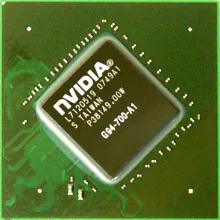
The NVIDIA G94 is a graphics processing unit (GPU) that was part of NVIDIA's GeForce 9 series of graphics cards. It was first introduced in 2008 and was based on the G9x architecture, which was a significant improvement over its predecessor, the GeForce 8 series.
Key features and details about the G94 GPU:
-
Manufacturing Process: The G94 GPU was manufactured using a 65nm process technology.
-
Core Clock Speed: The core clock speeds of G94-based graphics cards varied depending on the specific model and manufacturer but generally ranged from 600 MHz to 800 MHz.
-
Shader Cores: It featured a varying number of shader cores (stream processors) depending on the card model, typically ranging from 32 to 64 shader cores.
-
Memory: G94-based cards were equipped with GDDR3 memory with varying capacities, commonly ranging from 256MB to 1GB.
-
DirectX Support: It supported DirectX 10, providing compatibility with modern games and applications of its time.
-
Performance: The G94 was a mid-range GPU, offering decent performance for gaming and multimedia tasks during its era.
-
Graphics Card Models: Graphics cards based on the G94 included the NVIDIA GeForce 9600 GT and the 9800 GT, among others.
-
Legacy Status: The G94 is considered outdated by modern standards, as it has been succeeded by several newer generations of NVIDIA GPUs, such as the GeForce 10, 20, and 30 series.
While the G94 was once a popular choice for mid-range gaming PCs, it has since been replaced by more powerful and energy-efficient graphics cards, making it a piece of computing history.
